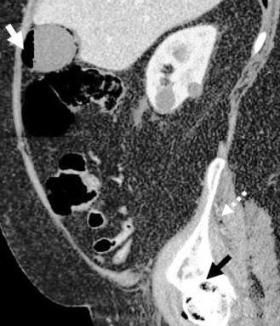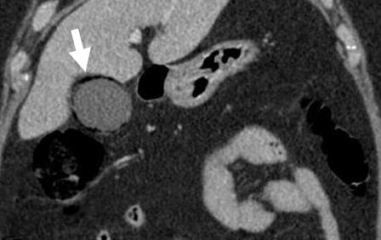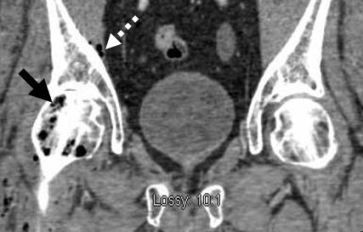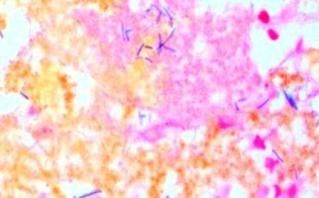- Clinical Technology
- Adult Immunization
- Hepatology
- Pediatric Immunization
- Screening
- Psychiatry
- Allergy
- Women's Health
- Cardiology
- Pediatrics
- Dermatology
- Endocrinology
- Pain Management
- Gastroenterology
- Infectious Disease
- Obesity Medicine
- Rheumatology
- Nephrology
- Neurology
- Pulmonology
An Unusual Presentation of Septic Hip
Emphysematous cholecystitis is a rare condition that is the result of infection with Clostridium perfringens and other gas-producing organisms including Escherichia coli, Bacteroides fragilis, and Klebsiella species.
Figure 1

Sagittal image Figure 2

Coronal image Figure 3

Coronal image Figure 4

A 68-year-old man with a history of hypertension and chronic obstructive pulmonary disease (COPD) presented to the emergency department with right hip pain and fevers of 4 days’ duration. He was unable to bear weight on the right lower extremity and there was limited range of motion of the right hip secondary to pain. Vital signs were: blood pressure, 136/85 mm Hg; pulse, 129 beats/min; temperature, 38oC (100.4oF); respiratory rate, 23 breaths/min; and O2 saturation, 96% on room air.
The patient’s medications were: fluticasone propionate/salmeterol, 250/50 µg, inhalation powder, twice daily; tiotropium bromide, 18 µg, inhalation powder, once daily; hydrochlorothiazide, 25 mg once daily; and prednisone, 5 mg daily. He had been hospitalized frequently during the past year for COPD exacerbations and multiple tapered-dose regimens of prednisone had been prescribed. The most recent course had been initiated 5 weeks before his current presentation and he had been taking the 5-mg daily dose for the past week.
Physical examination revealed an obese male in mild distress and diaphoresis. Abdominal examination revealed a soft and obese abdomen, normoactive bowel sounds, and no tenderness to palpation. Examination of the right hip found limited passive and active range of motion in all directions secondary to pain. Hip swelling and erythema were not present. Laboratory testing was significant for a white blood cell count of 18.5 K/µL, with 11% bands; erythrocyte sedimentation rate of 105 mm/h; and C-reactive protein level of 56 mg/dL. Blood and urine cultures were negative.
A CT scan of the abdomen and pelvis revealed multiple foci of gas throughout the right femoral head (Figures 1 and 2, black arrows); gas extending along the right iliacus muscle (Figures 1 and 2, dashed white arrows) and an air-fluid level within the gallbladder lumen (Figure 1, solid white arrow) with peripheral gas in the wall (Figure 3, solid white arrow). Culture of the hip bone was positive for Clostridium perfringens.
What is your diagnosis?
Please leave your thoughts on diagnosis below, then click here for the answer, case resolution, and discussion.
